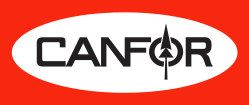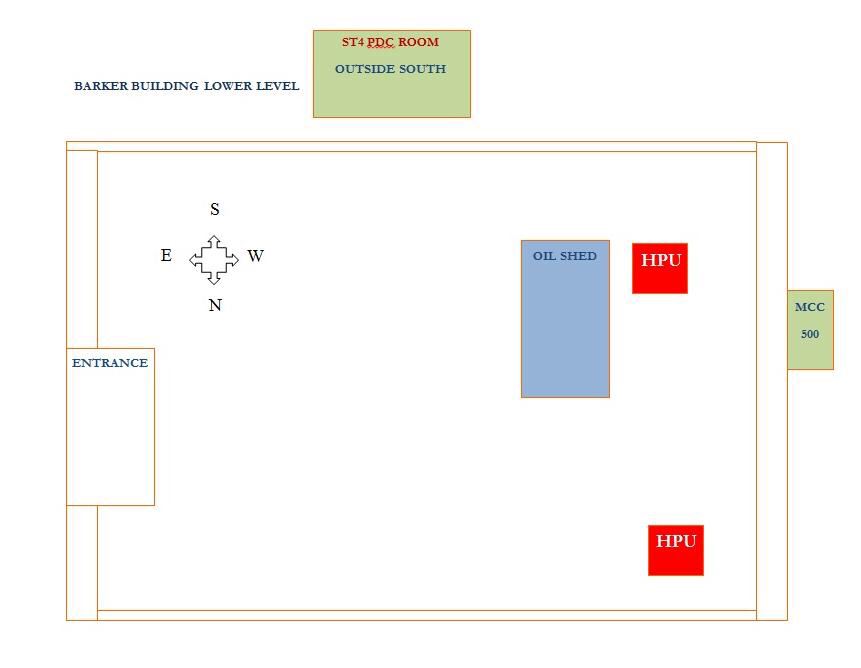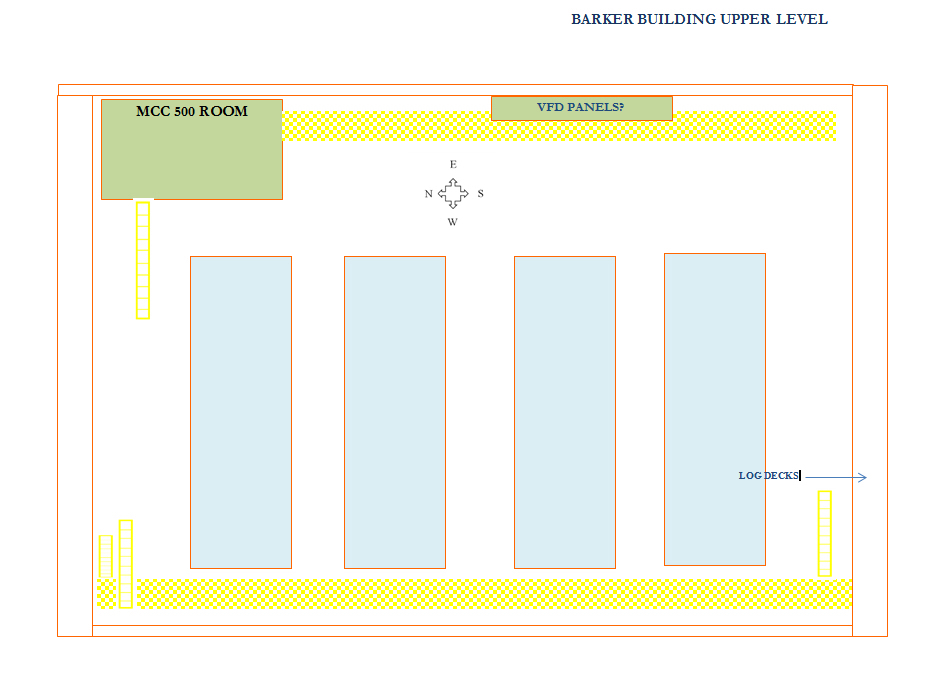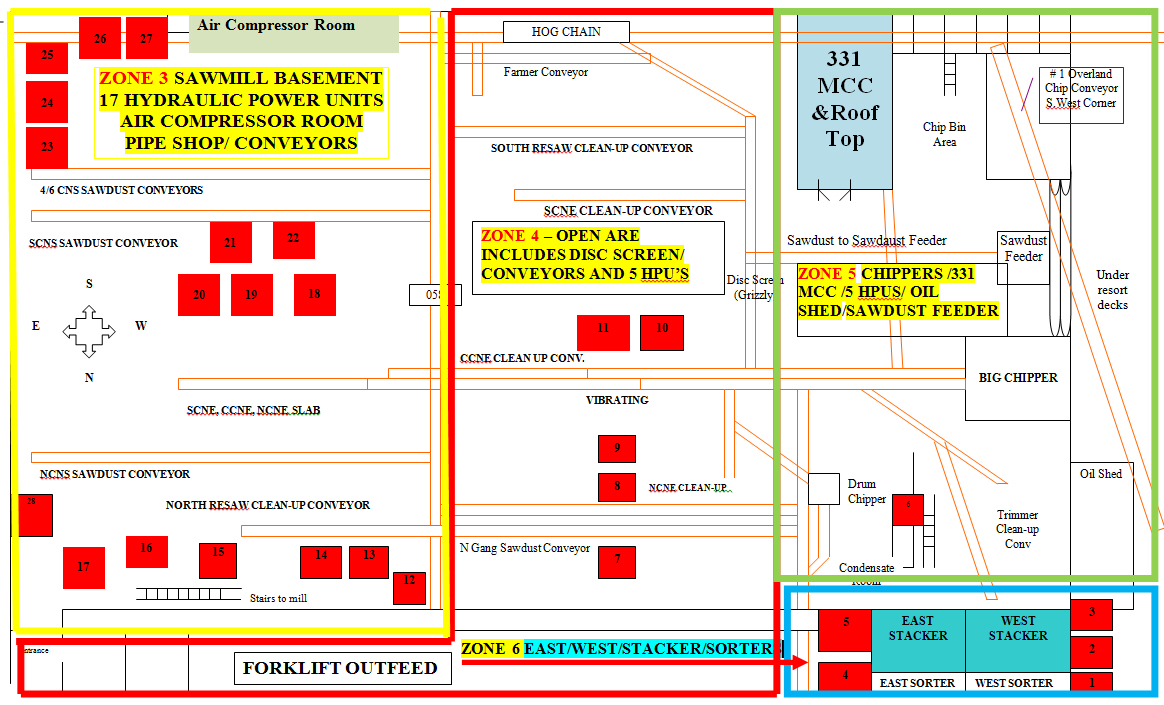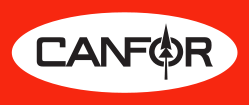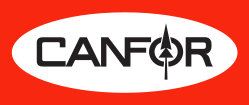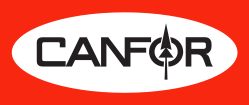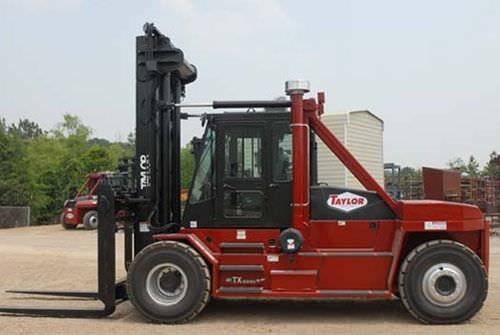Title Page
-
Houston
-
-
-
-
Audit Title
-
Document No.
-
Conducted on
-
Prepared by
-
Accompanied by
Sawmill
ZONE 1 BARKER BUILDING LOWER LEVEL
-
Do the HPU's need attention?
-
Are primary dust levels acceptable, have they been removed from possible ignition sources such as heaters, electricity, hot work or friction?
-
Are primary dust levels acceptable, have they been removed from possible ignition sources such as heaters, electricity, hot work or friction?
-
Is it at risk due to an upset condition?
-
Does the divisional clean-up schedule show that the area will be cleaned shortly?
-
Is the current clean-up schedule adequate?
-
Could the secondary dust have been better controlled at the source? If yes, please comment as to how by pressing the (...) buttons to the right.
-
Are observed employee work practices within the zone consistent with the program (ie. Use of compressed air, hot work practices)?
-
Did you test employees knowledge of combustible dust and its associated hazards? Choose N/A if not.
-
Ask employee each of the following questions and check if answered correctly (Answer is included)
-
Can you tell me the difference between primary and secondary dust? A. Primary dust is found at the dust source and is larger with higher moisture contents than secondary dust that has spread throughout the area on raised surfaces.
-
What is considered an unacceptable level of secondary dust? A. 1/8" over 5% of the work area.
-
What are your responsibilities with regards to mitigation of combustible dust? A. Understand the risk mitigation matrix for my area, understand the divisional dust control plan, recognize, control and report unsafe conditions.
-
Describe the requirements for use of compressed air? A. Fill out a compressed air pre-work card, do not create a dust plume, compressed air is only to be used as a last resort.
ZONE 2 BARKER BUILDING UPPER LEVEL
-
Do the HPU's need attention?
-
Are primary dust levels acceptable, have they been removed from possible ignition sources such as heaters, electricity, hot work or friction?
-
Are secondary dust levels acceptable, are they at less than 1/8" over 5% of the work area?
-
Is it at risk due to an upset condition?
-
Does the divisional clean-up schedule show that the area will be cleaned shortly?
-
Is the current clean-up schedule adequate?
-
Could the secondary dust have been better controlled at the source? If yes, please comment as to how by pressing the (...) buttons to the right.
-
Are observed employee work practices within the zone consistent with the program (ie. Use of compressed air, hot work practices)?
-
Did you test employees knowledge of combustible dust and its associated hazards? Choose N/A if you did not.
-
Ask employee each of the following questions and check if answered correctly (Answer is included)
-
Can you tell me the difference between primary and secondary dust? A. Primary dust is found at the dust source and is larger with higher moisture contents than secondary dust that has spread throughout the area on raised surfaces.
-
What is considered an unacceptable level of secondary dust? A. 1/8" over 5% of the work area.
-
What are your responsibilities with regards to mitigation of combustible dust? A. Understand the risk mitigation matrix for my area, understand the divisional dust control plan, recognize, control and report unsafe conditions.
-
Describe the requirements for use of compressed air? A. Fill out a compressed air pre-work card, do not create a dust plume, compressed air is only to be used as a last resort.
Barker/ Canter/ CNS/ Resaw/ Gang/ Edgers basement
-
Are primary dust levels acceptable, have they been removed from possible ignition sources such as heaters, electricity, hot work or friction?
-
Are secondary dust levels acceptable, are they at less than 1/8" over 5% of the work area?
-
Is it at risk due to an upset condition?
-
Does the divisional clean-up schedule show that the area will be cleaned shortly?
-
Is the current clean-up schedule adequate?
-
Could the secondary dust have been better controlled at the source? If yes, please comment as to how by pressing the (...) buttons to the right.
-
Are observed employee work practices within the zone consistent with the program (ie. Use of compressed air, hot work practices)?
-
Did you test employees knowledge of combustible dust and its associated hazards? Choose N/A if not.
-
Ask employee each of the following questions and check if answered correctly (Answer is included)
-
Can you tell me the difference between primary and secondary dust? A. Primary dust is found at the dust source and is larger with higher moisture contents than secondary dust that has spread throughout the area on raised surfaces.
-
What is considered an unacceptable level of secondary dust? A. 1/8" over 5% of the work area.
-
What are your responsibilities with regards to mitigation of combustible dust? A. Understand the risk mitigation matrix for my area, understand the divisional dust control plan, recognize, control and report unsafe conditions.
-
Describe the requirements for use of compressed air? A. Fill out a compressed air pre-work card, do not create a dust plume, compressed air is only to be used as a last resort.
Canter 4/6 ncns scns
-
Are primary dust levels acceptable, have they been removed from possible ignition sources such as heaters, electricity, hot work or friction?
-
Are secondary dust levels acceptable, are they at less than 1/8" over 5% of the work area?
-
Is it at risk due to an upset condition?
-
Does the divisional clean-up schedule show that the area will be cleaned shortly?
-
Is the current clean-up schedule adequate?
-
Could the secondary dust have been better controlled at the source? If yes, please comment as to how by pressing the (...) buttons to the right.
-
Are observed employee work practices within the zone consistent with the program (ie. Use of compressed air, hot work practices)?
-
Did you test employees knowledge of combustible dust and its associated hazards? Choose N/A if not.
-
Ask employee each of the following questions and check if answered correctly (Answer is included)
-
Can you tell me the difference between primary and secondary dust? A. Primary dust is found at the dust source and is larger with higher moisture contents than secondary dust that has spread throughout the area on raised surfaces.
-
What is considered an unacceptable level of secondary dust? A. 1/8" over 5% of the work area.
-
What are your responsibilities with regards to mitigation of combustible dust? A. Understand the risk mitigation matrix for my area, understand the divisional dust control plan, recognize, control and report unsafe conditions.
-
Describe the requirements for use of compressed air? A. Fill out a compressed air pre-work card, do not create a dust plume, compressed air is only to be used as a last resort.
S resaw/ N resaw /S Gang / N Gang
-
Are primary dust levels acceptable, have they been removed from possible ignition sources such as heaters, electricity, hot work or friction?
-
Are secondary dust levels acceptable, are they at less than 1/8" over 5% of the work area?
-
Is it at risk due to an upset condition?
-
Does the divisional clean-up schedule show that the area will be cleaned shortly?
-
Is the current clean-up schedule adequate?
-
Could the secondary dust have been better controlled at the source? If yes, please comment as to how by pressing the (...) buttons to the right.
-
Are observed employee work practices within the zone consistent with the program (ie. Use of compressed air, hot work practices)?
-
Did you test employees knowledge of combustible dust and its associated hazards? Choose N/A if not.
-
Ask employee each of the following questions and check if answered correctly (Answer is included)
-
Can you tell me the difference between primary and secondary dust? A. Primary dust is found at the dust source and is larger with higher moisture contents than secondary dust that has spread throughout the area on raised surfaces.
-
What is considered an unacceptable level of secondary dust? A. 1/8" over 5% of the work area.
-
What are your responsibilities with regards to mitigation of combustible dust? A. Understand the risk mitigation matrix for my area, understand the divisional dust control plan, recognize, control and report unsafe conditions.
-
Describe the requirements for use of compressed air? A. Fill out a compressed air pre-work card, do not create a dust plume, compressed air is only to be used as a last resort.
S Edger / C Edger / N Edger
-
Are primary dust levels acceptable, have they been removed from possible ignition sources such as heaters, electricity, hot work or friction?
-
Are secondary dust levels acceptable, are they at less than 1/8" over 5% of the work area?
-
Is it at risk due to an upset condition?
-
Does the divisional clean-up schedule show that the area will be cleaned shortly?
-
Is the current clean-up schedule adequate?
-
Could the secondary dust have been better controlled at the source? If yes, please comment as to how by pressing the (...) buttons to the right.
-
Are observed employee work practices within the zone consistent with the program (ie. Use of compressed air, hot work practices)?
-
Did you test employees knowledge of combustible dust and its associated hazards? Choose N/A if not.
-
Ask employee each of the following questions and check if answered correctly (Answer is included)
-
Can you tell me the difference between primary and secondary dust? A. Primary dust is found at the dust source and is larger with higher moisture contents than secondary dust that has spread throughout the area on raised surfaces.
-
What is considered an unacceptable level of secondary dust? A. 1/8" over 5% of the work area.
-
What are your responsibilities with regards to mitigation of combustible dust? A. Understand the risk mitigation matrix for my area, understand the divisional dust control plan, recognize, control and report unsafe conditions.
-
Describe the requirements for use of compressed air? A. Fill out a compressed air pre-work card, do not create a dust plume, compressed air is only to be used as a last resort.
E & W Sorter/ Trimmers/ Stackers
-
Are primary dust levels acceptable, have they been removed from possible ignition sources such as heaters, electricity, hot work or friction?
-
Are secondary dust levels acceptable, are they at less than 1/8" over 5% of the work area?
-
Is it at risk due to an upset condition?
-
Does the divisional clean-up schedule show that the area will be cleaned shortly?
-
Is the current clean-up schedule adequate?
-
Could the secondary dust have been better controlled at the source? If yes, please comment as to how by pressing the (...) buttons to the right.
-
Are observed employee work practices within the zone consistent with the program (ie. Use of compressed air, hot work practices)?
-
Did you test employees knowledge of combustible dust and its associated hazards? Choose N/A if you did not.
-
Ask employee each of the following questions and check if answered correctly (Answer is included)
-
Can you tell me the difference between primary and secondary dust? A. Primary dust is found at the dust source and is larger with higher moisture contents than secondary dust that has spread throughout the area on raised surfaces.
-
What is considered an unacceptable level of secondary dust? A. 1/8" over 5% of the work area.
-
What are your responsibilities with regards to mitigation of combustible dust? A. Understand the risk mitigation matrix for my area, understand the divisional dust control plan, recognize, control and report unsafe conditions.
-
Describe the requirements for use of compressed air? A. Fill out a compressed air pre-work card, do not create a dust plume, compressed air is only to be used as a last resort.
Chip Bins/ Rescreens/ Chipper room
-
Are primary dust levels acceptable, have they been removed from possible ignition sources such as heaters, electricity, hot work or friction?
-
Are secondary dust levels acceptable, are they at less than 1/8" over 5% of the work area?
-
Is it at risk due to an upset condition?
-
Does the divisional clean-up schedule show that the area will be cleaned shortly?
-
Is the current clean-up schedule adequate?
-
Could the secondary dust have been better controlled at the source? If yes, please comment as to how by pressing the (...) buttons to the right.
-
Are observed employee work practices within the zone consistent with the program (ie. Use of compressed air, hot work practices)?
-
Did you test employees knowledge of combustible dust and its associated hazards? Choose N/A if not.
-
Ask employee each of the following questions and check if answered correctly (Answer is included)
-
Can you tell me the difference between primary and secondary dust? A. Primary dust is found at the dust source and is larger with higher moisture contents than secondary dust that has spread throughout the area on raised surfaces.
-
What is considered an unacceptable level of secondary dust? A. 1/8" over 5% of the work area.
-
What are your responsibilities with regards to mitigation of combustible dust? A. Understand the risk mitigation matrix for my area, understand the divisional dust control plan, recognize, control and report unsafe conditions.
-
Describe the requirements for use of compressed air? A. Fill out a compressed air pre-work card, do not create a dust plume, compressed air is only to be used as a last resort.
Trimmer infeeds/ Drum chipper
-
Are primary dust levels acceptable, have they been removed from possible ignition sources such as heaters, electricity, hot work or friction?
-
Are secondary dust levels acceptable, are they at less than 1/8" over 5% of the work area?
-
Is it at risk due to an upset condition?
-
Does the divisional clean-up schedule show that the area will be cleaned shortly?
-
Is the current clean-up schedule adequate?
-
Could the secondary dust have been better controlled at the source? If yes, please comment as to how by pressing the (...) buttons to the right.
-
Are observed employee work practices within the zone consistent with the program (ie. Use of compressed air, hot work practices)?
-
Did you test employees knowledge of combustible dust and its associated hazards? Choose N/A if not.
-
Ask employee each of the following questions and check if answered correctly (Answer is included)
-
Can you tell me the difference between primary and secondary dust? A. Primary dust is found at the dust source and is larger with higher moisture contents than secondary dust that has spread throughout the area on raised surfaces.
-
What is considered an unacceptable level of secondary dust? A. 1/8" over 5% of the work area.
-
What are your responsibilities with regards to mitigation of combustible dust? A. Understand the risk mitigation matrix for my area, understand the divisional dust control plan, recognize, control and report unsafe conditions.
-
Describe the requirements for use of compressed air? A. Fill out a compressed air pre-work card, do not create a dust plume, compressed air is only to be used as a last resort.
Sawmill Stacker/ Sorters
-
Are primary dust levels acceptable, have they been removed from possible ignition sources such as heaters, electricity, hot work or friction?
-
Are secondary dust levels acceptable, are they at less than 1/8" over 5% of the work area?
-
Is it at risk due to an upset condition?
-
Does the divisional clean-up schedule show that the area will be cleaned shortly?
-
Is the current clean-up schedule adequate?
-
Could the secondary dust have been better controlled at the source? If yes, please comment as to how by pressing the (...) buttons to the right.
-
Are observed employee work practices within the zone consistent with the program (ie. Use of compressed air, hot work practices)?
-
Did you test employees knowledge of combustible dust and its associated hazards? Choose N/A if not.
-
Ask employee each of the following questions and check if answered correctly (Answer is included)
-
Can you tell me the difference between primary and secondary dust? A. Primary dust is found at the dust source and is larger with higher moisture contents than secondary dust that has spread throughout the area on raised surfaces.
-
What is considered an unacceptable level of secondary dust? A. 1/8" over 5% of the work area.
-
What are your responsibilities with regards to mitigation of combustible dust? A. Understand the risk mitigation matrix for my area, understand the divisional dust control plan, recognize, control and report unsafe conditions.
-
Describe the requirements for use of compressed air? A. Fill out a compressed air pre-work card, do not create a dust plume, compressed air is only to be used as a last resort.
Planer
Planer Storage
-
Do HPU's need attention?
-
Are primary dust levels acceptable, have they been removed from possible ignition sources such as heaters, electricity, hot work or friction?
-
Are secondary dust levels acceptable, are they at less than 1/8" over 5% of the work area?
-
Are observed employee work practices within the zone consistent with the program (ie. Use of compressed air, hot work practices)?
-
Is it at risk due to an upset condition?
-
Does the divisional clean-up schedule show that the area will be cleaned shortly?
-
Did you test employees knowledge of combustible dust and its associated hazards? Choose N/A if you did not.
-
Ask employee each of the following questions and check if answered correctly (Answer is included)
-
Can you tell me the difference between primary and secondary dust? A. Primary dust is found at the dust source and is larger with higher moisture contents than secondary dust that has spread throughout the area on raised surfaces.
-
What is considered an unacceptable level of secondary dust? A. 1/8" over 5% of the work area.
-
What are your responsibilities with regards to mitigation of combustible dust? A. Understand the risk mitigation matrix for my area, understand the divisional dust control plan, recognize, control and report unsafe conditions.
-
Describe the requirements for use of compressed air? A. Fill out a compressed air pre-work card, do not create a dust plume, compressed air is only to be used as a last resort.
Planer #1 Infeed
-
Do HPU's need attention?
-
Is it at risk due to an upset condition?
-
Does the divisional clean-up schedule show that the area will be cleaned shortly?
-
Is the current clean-up schedule adequate?
-
Could the secondary dust have been better controlled at the source? If yes, please comment as to how by pressing the (...) buttons to the right.
-
Are primary dust levels acceptable, have they been removed from possible ignition sources such as heaters, electricity, hot work or friction?
-
Are secondary dust levels acceptable, are they at less than 1/8" over 5% of the work area?
-
Are observed employee work practices within the zone consistent with the program (ie. Use of compressed air, hot work practices)?
-
Did you test employees knowledge of combustible dust and its associated hazards? Choose N/A if not.
-
Ask employee each of the following questions and check if answered correctly (Answer is included)
-
Can you tell me the difference between primary and secondary dust? A. Primary dust is found at the dust source and is larger with higher moisture contents than secondary dust that has spread throughout the area on raised surfaces.
-
What is considered an unacceptable level of secondary dust? A. 1/8" over 5% of the work area.
-
What are your responsibilities with regards to mitigation of combustible dust? A. Understand the risk mitigation matrix for my area, understand the divisional dust control plan, recognize, control and report unsafe conditions.
-
Describe the requirements for use of compressed air? A. Fill out a compressed air pre-work card, do not create a dust plume, compressed air is only to be used as a last resort.
Waste System
-
Do HPU's need attention?
-
Is it at risk due to an upset condition?
-
Does the divisional clean-up schedule show that the area will be cleaned shortly?
-
Is the current clean-up schedule adequate?
-
Could the secondary dust have been better controlled at the source? If yes, please comment as to how by pressing the (...) buttons to the right.
-
Are primary dust levels acceptable, have they been removed from possible ignition sources such as heaters, electricity, hot work or friction?
-
Are secondary dust levels acceptable, are they at less than 1/8" over 5% of the work area?
-
Are observed employee work practices within the zone consistent with the program (ie. Use of compressed air, hot work practices)?
-
Did you test employees knowledge of combustible dust and its associated hazards? Choose N/A if not.
Strip Belt / 1 & 2 Tilt Hoist
-
Do HPU's need attention?
-
Is it at risk due to an upset condition?
-
Does the divisional clean-up schedule show that the area will be cleaned shortly?
-
Is the current clean-up schedule adequate?
-
Could the secondary dust have been better controlled at the source? If yes, please comment as to how by pressing the (...) buttons to the right.
-
Are primary dust levels acceptable, have they been removed from possible ignition sources such as heaters, electricity, hot work or friction?
-
Are secondary dust levels acceptable, are they at less than 1/8" over 5% of the work area?
-
Are observed employee work practices within the zone consistent with the program (ie. Use of compressed air, hot work practices)?
-
Did you test employees knowledge of combustible dust and its associated hazards? Choose N/A if not.
-
Ask employee each of the following questions and check if answered correctly (Answer is included)
-
Can you tell me the difference between primary and secondary dust? A. Primary dust is found at the dust source and is larger with higher moisture contents than secondary dust that has spread throughout the area on raised surfaces.
-
What is considered an unacceptable level of secondary dust? A. 1/8" over 5% of the work area.
-
What are your responsibilities with regards to mitigation of combustible dust? A. Understand the risk mitigation matrix for my area, understand the divisional dust control plan, recognize, control and report unsafe conditions.
-
Describe the requirements for use of compressed air? A. Fill out a compressed air pre-work card, do not create a dust plume, compressed air is only to be used as a last resort.
Line 1 & 2 / infeed / planers
-
Are primary dust levels acceptable, have they been removed from possible ignition sources such as heaters, electricity, hot work or friction?
-
Are secondary dust levels acceptable, are they at less than 1/8" over 5% of the work area?
-
Do HPU's need attention?
-
Is it at risk due to an upset condition?
-
Does the divisional clean-up schedule show that the area will be cleaned shortly?
-
Is the current clean-up schedule adequate?
-
Could the secondary dust have been better controlled at the source? If yes, please comment as to how by pressing the (...) buttons to the right.
-
Are observed employee work practices within the zone consistent with the program (ie. Use of compressed air, hot work practices)?
-
Did you test employees knowledge of combustible dust and its associated hazards? Choose N/A if not.
-
Ask employee each of the following questions and check if answered correctly (Answer is included)
-
Can you tell me the difference between primary and secondary dust? A. Primary dust is found at the dust source and is larger with higher moisture contents than secondary dust that has spread throughout the area on raised surfaces.
-
What is considered an unacceptable level of secondary dust? A. 1/8" over 5% of the work area.
-
What are your responsibilities with regards to mitigation of combustible dust? A. Understand the risk mitigation matrix for my area, understand the divisional dust control plan, recognize, control and report unsafe conditions.
-
Describe the requirements for use of compressed air? A. Fill out a compressed air pre-work card, do not create a dust plume, compressed air is only to be used as a last resort.
Line 1 & 2 planer outfeed / slowdown belts
-
Are primary dust levels acceptable, have they been removed from possible ignition sources such as heaters, electricity, hot work or friction?
-
Are secondary dust levels acceptable, are they at less than 1/8" over 5% of the work area?
-
Do HPU's need attention?
-
Is it at risk due to an upset condition?
-
Does the divisional clean-up schedule show that the area will be cleaned shortly?
-
Is the current clean-up schedule adequate?
-
Could the secondary dust have been better controlled at the source? If yes, please comment as to how by pressing the (...) buttons to the right.
-
Are observed employee work practices within the zone consistent with the program (ie. Use of compressed air, hot work practices)?
-
Did you test employees knowledge of combustible dust and its associated hazards? Choose N/A if you did not.
-
Ask employee each of the following questions and check if answered correctly (Answer is included)
-
Can you tell me the difference between primary and secondary dust? A. Primary dust is found at the dust source and is larger with higher moisture contents than secondary dust that has spread throughout the area on raised surfaces.
-
What is considered an unacceptable level of secondary dust? A. 1/8" over 5% of the work area.
-
What are your responsibilities with regards to mitigation of combustible dust? A. Understand the risk mitigation matrix for my area, understand the divisional dust control plan, recognize, control and report unsafe conditions.
-
Describe the requirements for use of compressed air? A. Fill out a compressed air pre-work card, do not create a dust plume, compressed air is only to be used as a last resort.
Line 1 & 2 Trimmers / Sorters
-
Are primary dust levels acceptable, have they been removed from possible ignition sources such as heaters, electricity, hot work or friction?
-
Are secondary dust levels acceptable, are they at less than 1/8" over 5% of the work area?
-
Do HPU's need attention?
-
Is it at risk due to an upset condition?
-
Does the divisional clean-up schedule show that the area will be cleaned shortly?
-
Is the current clean-up schedule adequate?
-
Could the secondary dust have been better controlled at the source? If yes, please comment as to how by pressing the (...) buttons to the right.
-
Are observed employee work practices within the zone consistent with the program (ie. Use of compressed air, hot work practices)?
-
Did you test employees knowledge of combustible dust and its associated hazards? Choose N/A if not.
-
Ask employee each of the following questions and check if answered correctly (Answer is included)
-
Can you tell me the difference between primary and secondary dust? A. Primary dust is found at the dust source and is larger with higher moisture contents than secondary dust that has spread throughout the area on raised surfaces.
-
What is considered an unacceptable level of secondary dust? A. 1/8" over 5% of the work area.
-
What are your responsibilities with regards to mitigation of combustible dust? A. Understand the risk mitigation matrix for my area, understand the divisional dust control plan, recognize, control and report unsafe conditions.
-
Describe the requirements for use of compressed air? A. Fill out a compressed air pre-work card, do not create a dust plume, compressed air is only to be used as a last resort.
Line 1, 2& 3 Stackers / Bander
-
Do HPU's need attention?
-
Is it at risk due to an upset condition?
-
Does the divisional clean-up schedule show that the area will be cleaned shortly?
-
Is the current clean-up schedule adequate?
-
Could the secondary dust have been better controlled at the source? If yes, please comment as to how by pressing the (...) buttons to the right.
-
Are primary dust levels acceptable, have they been removed from possible ignition sources such as heaters, electricity, hot work or friction?
-
Are secondary dust levels acceptable, are they at less than 1/8" over 5% of the work area?
-
Is it at risk due to an upset condition?
-
Does the divisional clean-up schedule show that the area will be cleaned shortly?
-
Is the current clean-up schedule adequate?
-
Could the secondary dust have been better controlled at the source? If yes, please comment as to how by pressing the (...) buttons to the right.
-
Are observed employee work practices within the zone consistent with the program (ie. Use of compressed air, hot work practices)?
-
Did you test employees knowledge of combustible dust and its associated hazards? Choose N/A if not.
-
Ask employee each of the following questions and check if answered correctly (Answer is included)
-
Can you tell me the difference between primary and secondary dust? A. Primary dust is found at the dust source and is larger with higher moisture contents than secondary dust that has spread throughout the area on raised surfaces.
-
What is considered an unacceptable level of secondary dust? A. 1/8" over 5% of the work area.
-
What are your responsibilities with regards to mitigation of combustible dust? A. Understand the risk mitigation matrix for my area, understand the divisional dust control plan, recognize, control and report unsafe conditions.
-
Describe the requirements for use of compressed air? A. Fill out a compressed air pre-work card, do not create a dust plume, compressed air is only to be used as a last resort.
Paperwrap transfer stations
-
Do HPU's need attention?
-
Is it at risk due to an upset condition?
-
Does the divisional clean-up schedule show that the area will be cleaned shortly?
-
Is the current clean-up schedule adequate?
-
Could the secondary dust have been better controlled at the source? If yes, please comment as to how by pressing the (...) buttons to the right.
-
Are primary dust levels acceptable, have they been removed from possible ignition sources such as heaters, electricity, hot work or friction?
-
Are secondary dust levels acceptable, are they at less than 1/8" over 5% of the work area?
-
Is it at risk due to an upset condition?
-
Does the divisional clean-up schedule show that the area will be cleaned shortly?
-
Is the current clean-up schedule adequate?
-
Could the secondary dust have been better controlled at the source? If yes, please comment as to how by pressing the (...) buttons to the right.
-
Are observed employee work practices within the zone consistent with the program (ie. Use of compressed air, hot work practices)?
WET FUEL BIN
-
Do HPU's need attention?
-
Is it at risk due to an upset condition?
-
Does the divisional clean-up schedule show that the area will be cleaned shortly?
-
Is the current clean-up schedule adequate?
-
Could the secondary dust have been better controlled at the source? If yes, please comment as to how by pressing the (...) buttons to the right.
-
Are primary dust levels acceptable, have they been removed from possible ignition sources such as heaters, electricity, hot work or friction?
-
Are the secondary dust levels acceptable? Are they less than 1/8 over 5% of the work are?
-
Did you test employees knowledge of combustible dust and its associated hazards? Choose N/A if not.
-
Ask employee each of the following questions and check if answered correctly (Answer is included)
-
Can you tell me the difference between primary and secondary dust? A. Primary dust is found at the dust source and is larger with higher moisture contents than secondary dust that has spread throughout the area on raised surfaces.
-
What is considered an unacceptable level of secondary dust? A. 1/8" over 5% of the work area.
-
What are your responsibilities with regards to mitigation of combustible dust? A. Understand the risk mitigation matrix for my area, understand the divisional dust control plan, recognize, control and report unsafe conditions.
-
Describe the requirements for use of compressed air? A. Fill out a compressed air pre-work card, do not create a dust plume, compressed air is only to be used as a last resort.
-
Are primary dust levels acceptable, have they been removed from possible ignition sources such as heaters, electricity, hot work or friction?
-
Are secondary dust levels acceptable, are they at less than 1/8" over 5% of the work area?
-
Is it at risk due to an upset condition?
-
Does the divisional clean-up schedule show that the area will be cleaned shortly?
-
Is the current clean-up schedule adequate?
-
Are primary dust levels acceptable, have they been removed from possible ignition sources such as heaters, electricity, hot work or friction?
-
Could the secondary dust have been better controlled at the source? If yes, please comment as to how by pressing the (...) buttons to the right.
-
Are secondary dust levels acceptable, are they at less than 1/8" over 5% of the work area?
-
Is it at risk due to an upset condition?
-
Does the divisional clean-up schedule show that the area will be cleaned shortly?
-
Is the current clean-up schedule adequate?
-
Could the secondary dust have been better controlled at the source? If yes, please comment as to how by pressing the (...) buttons to the right.
ENERGY PLANTf
-
Do HPU's need attention?
-
Is it at risk due to an upset condition?
-
Does the divisional clean-up schedule show that the area will be cleaned shortly?
-
Is the current clean-up schedule adequate?
-
Could the secondary dust have been better controlled at the source? If yes, please comment as to how by pressing the (...) buttons to the right.
-
Are primary dust levels acceptable, have they been removed from possible ignition sources such as heaters, electricity, hot work or friction?
-
Are the secondary dust levels acceptable? Are they less than 1/8 over 5% of the work are?
-
Are observed employee work practices within the zone consistent with the program (ie. Use of compressed air, hot work practices)?
-
Did you test employees knowledge of combustible dust and its associated hazards? Choose N/A if not.
-
Ask employee each of the following questions and check if answered correctly (Answer is included)
-
Can you tell me the difference between primary and secondary dust? A. Primary dust is found at the dust source and is larger with higher moisture contents than secondary dust that has spread throughout the area on raised surfaces.
-
What is considered an unacceptable level of secondary dust? A. 1/8" over 5% of the work area.
-
What are your responsibilities with regards to mitigation of combustible dust? A. Understand the risk mitigation matrix for my area, understand the divisional dust control plan, recognize, control and report unsafe conditions.
-
Describe the requirements for use of compressed air? A. Fill out a compressed air pre-work card, do not create a dust plume, compressed air is only to be used as a last resort.
Mobile shop etcetera
Mobile Shop
-
Are primary dust levels acceptable, have they been removed from possible ignition sources such as heaters, electricity, hot work or friction?
-
Are secondary dust levels acceptable, are they at less than 1/8" over 5% of the work area?
-
Is it at risk due to an upset condition?
-
Does the divisional clean-up schedule show that the area will be cleaned shortly?
-
Is the current clean-up schedule adequate?
-
Could the secondary dust have been better controlled at the source? If yes, please comment as to how by pressing the (...) buttons to the right.
-
Are observed employee work practices within the zone consistent with the program (ie. Use of compressed air, hot work practices)?
-
Did you test employees knowledge of combustible dust and its associated hazards? Choose N/A if not.
-
Ask employee each of the following questions and check if answered correctly (Answer is included)
-
Can you tell me the difference between primary and secondary dust? A. Primary dust is found at the dust source and is larger with higher moisture contents than secondary dust that has spread throughout the area on raised surfaces.
-
What is considered an unacceptable level of secondary dust? A. 1/8" over 5% of the work area.
-
What are your responsibilities with regards to mitigation of combustible dust? A. Understand the risk mitigation matrix for my area, understand the divisional dust control plan, recognize, control and report unsafe conditions.
-
Describe the requirements for use of compressed air? A. Fill out a compressed air pre-work card, do not create a dust plume, compressed air is only to be used as a last resort.
Kilns
-
Are primary dust levels acceptable, have they been removed from possible ignition sources such as heaters, electricity, hot work or friction?
-
Are secondary dust levels acceptable, are they at less than 1/8" over 5% of the work area?
-
Is it at risk due to an upset condition?
-
Does the divisional clean-up schedule show that the area will be cleaned shortly?
-
Is the current clean-up schedule adequate?
-
Could the secondary dust have been better controlled at the source? If yes, please comment as to how by pressing the (...) buttons to the right.
-
Are observed employee work practices within the zone consistent with the program (ie. Use of compressed air, hot work practices)?
-
Did you test employees knowledge of combustible dust and its associated hazards? Choose N/A if not.
-
Ask employee each of the following questions and check if answered correctly (Answer is included)
-
Can you tell me the difference between primary and secondary dust? A. Primary dust is found at the dust source and is larger with higher moisture contents than secondary dust that has spread throughout the area on raised surfaces.
-
What is considered an unacceptable level of secondary dust? A. 1/8" over 5% of the work area.
-
What are your responsibilities with regards to mitigation of combustible dust? A. Understand the risk mitigation matrix for my area, understand the divisional dust control plan, recognize, control and report unsafe conditions.
-
Describe the requirements for use of compressed air? A. Fill out a compressed air pre-work card, do not create a dust plume, compressed air is only to be used as a last resort.
Fab Shop
-
Are primary dust levels acceptable, have they been removed from possible ignition sources such as heaters, electricity, hot work or friction?
-
Are secondary dust levels acceptable, are they at less than 1/8" over 5% of the work area?
-
Is it at risk due to an upset condition?
-
Does the divisional clean-up schedule show that the area will be cleaned shortly?
-
Is the current clean-up schedule adequate?
-
Could the secondary dust have been better controlled at the source? If yes, please comment as to how by pressing the (...) buttons to the right.
-
Are observed employee work practices within the zone consistent with the program (ie. Use of compressed air, hot work practices)?
-
Did you test employees knowledge of combustible dust and its associated hazards? Choose N/A if not.
-
Ask employee each of the following questions and check if answered correctly (Answer is included)
-
Can you tell me the difference between primary and secondary dust? A. Primary dust is found at the dust source and is larger with higher moisture contents than secondary dust that has spread throughout the area on raised surfaces.
-
What is considered an unacceptable level of secondary dust? A. 1/8" over 5% of the work area.
-
What are your responsibilities with regards to mitigation of combustible dust? A. Understand the risk mitigation matrix for my area, understand the divisional dust control plan, recognize, control and report unsafe conditions.
-
Describe the requirements for use of compressed air? A. Fill out a compressed air pre-work card, do not create a dust plume, compressed air is only to be used as a last resort.
Filing room
-
Are primary dust levels acceptable, have they been removed from possible ignition sources such as heaters, electricity, hot work or friction?
-
Are secondary dust levels acceptable, are they at less than 1/8" over 5% of the work area?
-
Is it at risk due to an upset condition?
-
Does the divisional clean-up schedule show that the area will be cleaned shortly?
-
Is the current clean-up schedule adequate?
-
Could the secondary dust have been better controlled at the source? If yes, please comment as to how by pressing the (...) buttons to the right.
-
Are observed employee work practices within the zone consistent with the program (ie. Use of compressed air, hot work practices)?
-
Did you test employees knowledge of combustible dust and its associated hazards? Choose N/A if not.
-
Ask employee each of the following questions and check if answered correctly (Answer is included)
-
Can you tell me the difference between primary and secondary dust? A. Primary dust is found at the dust source and is larger with higher moisture contents than secondary dust that has spread throughout the area on raised surfaces.
-
What is considered an unacceptable level of secondary dust? A. 1/8" over 5% of the work area.
-
What are your responsibilities with regards to mitigation of combustible dust? A. Understand the risk mitigation matrix for my area, understand the divisional dust control plan, recognize, control and report unsafe conditions.
-
Describe the requirements for use of compressed air? A. Fill out a compressed air pre-work card, do not create a dust plume, compressed air is only to be used as a last resort.
Hog
-
Are primary dust levels acceptable, have they been removed from possible ignition sources such as heaters, electricity, hot work or friction?
-
Are secondary dust levels acceptable, are they at less than 1/8" over 5% of the work area?
-
Is it at risk due to an upset condition?
-
Does the divisional clean-up schedule show that the area will be cleaned shortly?
-
Is the current clean-up schedule adequate?
-
Could the secondary dust have been better controlled at the source? If yes, please comment as to how by pressing the (...) buttons to the right.
-
Are observed employee work practices within the zone consistent with the program (ie. Use of compressed air, hot work practices)?
-
Did you test employees knowledge of combustible dust and its associated hazards? Choose N/A if not.
-
Ask employee each of the following questions and check if answered correctly (Answer is included)
-
Can you tell me the difference between primary and secondary dust? A. Primary dust is found at the dust source and is larger with higher moisture contents than secondary dust that has spread throughout the area on raised surfaces.
-
What is considered an unacceptable level of secondary dust? A. 1/8" over 5% of the work area.
-
What are your responsibilities with regards to mitigation of combustible dust? A. Understand the risk mitigation matrix for my area, understand the divisional dust control plan, recognize, control and report unsafe conditions.
-
Describe the requirements for use of compressed air? A. Fill out a compressed air pre-work card, do not create a dust plume, compressed air is only to be used as a last resort.
Energy Plant
-
Are primary dust levels acceptable, have they been removed from possible ignition sources such as heaters, electricity, hot work or friction?
-
Are secondary dust levels acceptable, are they at less than 1/8" over 5% of the work area?
-
Is it at risk due to an upset condition?
-
Does the divisional clean-up schedule show that the area will be cleaned shortly?
-
Is the current clean-up schedule adequate?
-
Could the secondary dust have been better controlled at the source? If yes, please comment as to how by pressing the (...) buttons to the right.
Wet Fuel Bin
-
Are primary dust levels acceptable, have they been removed from possible ignition sources such as heaters, electricity, hot work or friction?
-
Are secondary dust levels acceptable, are they at less than 1/8" over 5% of the work area?
-
Is it at risk due to an upset condition?
-
Does the divisional clean-up schedule show that the area will be cleaned shortly?
-
Is the current clean-up schedule adequate?
-
Could the secondary dust have been better controlled at the source? If yes, please comment as to how by pressing the (...) buttons to the right.
-
Is it at risk due to an upset condition?
-
Does the divisional clean-up schedule show that the area will be cleaned shortly?
-
Is the current clean-up schedule adequate?
-
Could the secondary dust have been better controlled at the source? If yes, please comment as to how by pressing the (...) buttons to the right.
